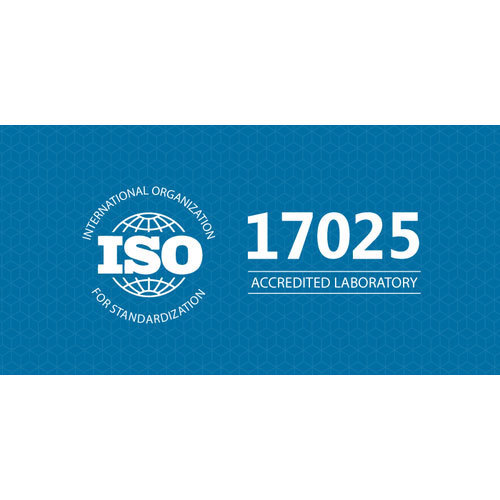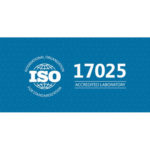What is the role of the Quality Control (QC) Laboratory?
The Quality Control (QC) laboratory serves as one of the most critical functions in consumer product manufacturing. The QC laboratory has the final say on product release based on adherence to established product specifications. Specifications establish a set of criteria to which a product should conform to be considered acceptable for its intended use. Specifications are proposed, justified and approved as part of an overall strategy to ensure the quality, safety, and consistency of consumer products. Subsequently, the quality of consumer products is determined by design, development, Good Manufacturing Practice (GMP) controls, product and process validations, and the specifications applied throughout product development and manufacturing. These specifications are specifically the validated test methods and procedures and the established acceptance criteria for product release and throughout shelf life/stability studies.
The Code of Federal Regulations, 21 CFR Part 211, Good Manufacturing Practice for Finished Pharmaceuticals, provides the minimum requirements for the manufacture of safe products that are consumed by humans or animals. More specifically, 21 CFR Part 211: Subpart I-Laboratory Controls, outlines the requirements and expectations for the quality control laboratory and drug product testing. Additionally, 21 CFR Part 117, Current Good Manufacturing Practice, Hazard Analysis, and Risk-Based Preventative Controls for Human Food: Subpart B-Processes and Controls states that appropriate QC operations must be implemented to ensure food products are safe for consumption and food packing materials and components are safe and fit for purpose. Both food and drug products must be tested against established specifications to verify quality and safety, and laboratory operations must have the appropriate processes and procedures to support and defend testing results.
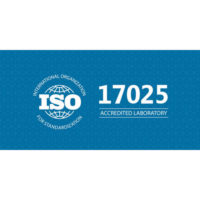 ISO/IEC 17025, General Requirements for the Competence of Testing and Calibration Laboratories is used to develop and implement laboratory management systems. Originally known as ISO/IEC Guide 25, first released in 1978, ISO/IEC 17025 was created with the belief that “third party certification systems [for laboratories] should, to the extent possible, be based on internationally agreed standards and procedures”7. National accreditation bodies are responsible for accrediting laboratories to ISO/IEC 17025. Accreditation bodies are responsible for assessing the quality system and technical aspects of a laboratory’s Quality Management System (QMS) to determine compliance to the requirements of ISO/IEC 17025. ISO/IEC 17025 accreditation is pursued by many laboratories as a way to set them apart from competitors. In some cannabis markets accreditation to the standard is mandatory.
ISO/IEC 17025, General Requirements for the Competence of Testing and Calibration Laboratories is used to develop and implement laboratory management systems. Originally known as ISO/IEC Guide 25, first released in 1978, ISO/IEC 17025 was created with the belief that “third party certification systems [for laboratories] should, to the extent possible, be based on internationally agreed standards and procedures”7. National accreditation bodies are responsible for accrediting laboratories to ISO/IEC 17025. Accreditation bodies are responsible for assessing the quality system and technical aspects of a laboratory’s Quality Management System (QMS) to determine compliance to the requirements of ISO/IEC 17025. ISO/IEC 17025 accreditation is pursued by many laboratories as a way to set them apart from competitors. In some cannabis markets accreditation to the standard is mandatory.
The approach to ISO/IEC 17025 accreditation is typically summarizing the standard requirements through the use of a checklist. Documentation is requested and reviewed to determine if what is provided satisfies the item listed on the checklist, which correlate directly to the requirements of the standard. ISO/IEC 17025 covers the requirements for both testing and calibration laboratories. Due to the wide range of testing laboratories, the standard cannot and should not be overly specific on how a laboratory would meet defined requirements. The objective of any laboratory seeking accreditation is to demonstrate they have an established QMS. Equally as critical, for product testing laboratories in particular, is the objective to establish GxP, “good practices”, to ensure test methods and laboratory operations verify product safety and quality. ISO/IEC 17025 provides the baseline, but compliance to Good Laboratory Practice (GLP), Good Manufacturing Practice (GMP) and even Good Safety Practices (GSP) are essential for cannabis testing laboratories to be successful and demonstrate testing data is reliable and accurate.
Where ISO/IEC 17025 accreditation falls short
Adherence to ISO/IEC 17025, and subsequently receiving accreditation, is an excellent way to ensure laboratories have put forth the effort to establish a QMS. However, for product testing laboratories specifically there are a number of “gaps” within the standard and the accreditation process. Below are my “Top Five” that I believe have the greatest impact on a cannabis testing laboratory’s ability to maintain compliance and consistency, verify data integrity and robust testing methods, and ensure the safety of laboratory personnel.
Standard Operating Procedures (SOPs)
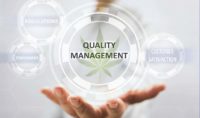 The understanding of what qualifies as a Standard Operating Procedure (SOP) is often misunderstood by cannabis operators. An SOP is a stand-alone set of step-by-step instructions which allow workers to consistently carry out routine operations, and documented training on SOPs confirms an employee’s comprehension of their job tasks. Although not required per the current version of the standard, many laboratories develop a Quality Manual (QM). A QM defines an organization’s Quality Policy, Quality Objectives, QMS, and the procedures which support the QMS. It is not an uncommon practice for cannabis laboratories to use the QM as the repository for their “procedures”. The intent of a QM is to be a high-level operations policy document. The QM is NOT a step-by-step procedure, or at least it shouldn’t be.
The understanding of what qualifies as a Standard Operating Procedure (SOP) is often misunderstood by cannabis operators. An SOP is a stand-alone set of step-by-step instructions which allow workers to consistently carry out routine operations, and documented training on SOPs confirms an employee’s comprehension of their job tasks. Although not required per the current version of the standard, many laboratories develop a Quality Manual (QM). A QM defines an organization’s Quality Policy, Quality Objectives, QMS, and the procedures which support the QMS. It is not an uncommon practice for cannabis laboratories to use the QM as the repository for their “procedures”. The intent of a QM is to be a high-level operations policy document. The QM is NOT a step-by-step procedure, or at least it shouldn’t be.
Test Method Transfer (TMT)
Some cannabis laboratories develop their own test methods, but a common practice in many cannabis laboratories is to purchase equipment from vendors that provide “validated” test methods. Laboratories purchase equipment, install equipment with pre-loaded methods and jump in to testing products. There is no formal verification (what is known as a Test Method Transfer (TMT)) by the laboratory to demonstrate the method validated by the vendor on the vendor’s equipment, with the vendor’s technicians, using the vendor’s standards and reagents, performs the same and generates “valid” results when the method is run on their own equipment, with their own technician(s), and using their own standards and reagents. 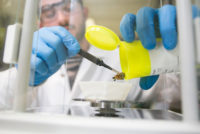 When discrepancies or variances in results are identified (most likely the result of an inadequate TMT), changes to test methods may be made with no justification or data to support the change, and the subsequent method becomes the “validated” method used for final release testing. The standard requires the laboratory to utilize “validated” methods. Most laboratories can easily provide documentation to meet that requirement. However, there is no verification that the process of either validating in house methods or transferring methods from a vendor were developed using any standard guidance on test method validation to confirm the methods are accurate, precise, robust and repeatable. Subsequently, there is no requirement to define, document, and justify changes to test methods. These requirements are mentioned in ISO/IEC 17025, Step 7.2.2, Validation of Methods, but they are written as “Notes” and not as actual necessities for accreditation acceptance.
When discrepancies or variances in results are identified (most likely the result of an inadequate TMT), changes to test methods may be made with no justification or data to support the change, and the subsequent method becomes the “validated” method used for final release testing. The standard requires the laboratory to utilize “validated” methods. Most laboratories can easily provide documentation to meet that requirement. However, there is no verification that the process of either validating in house methods or transferring methods from a vendor were developed using any standard guidance on test method validation to confirm the methods are accurate, precise, robust and repeatable. Subsequently, there is no requirement to define, document, and justify changes to test methods. These requirements are mentioned in ISO/IEC 17025, Step 7.2.2, Validation of Methods, but they are written as “Notes” and not as actual necessities for accreditation acceptance.
Change Control
The standard speaks to identifying “changes” in documents and authorizing changes made to software but the standard, and subsequently the accreditation criteria, is loose on the requirement of a Change Control process and procedure as part of the QMS. The laboratory is not offered any clear instruction of how to manage change control, including specific requirements for making changes to procedures and/or test methods, documented justification of those changes, and the identification of individuals authorized to approve those changes.
Out of Specification (OOS) results
The documentation and management of Out of Specification (OOS) testing results is perhaps one of the most critical liabilities witnessed for cannabis testing laboratories. The standard requires a procedure for “Nonconforming Work”. There is no mention of requiring a root cause investigation, no requirement to document actions, and most importantly there is no requirement to document a retesting plan, including justification for retesting. “Testing into compliance”, as this practice is commonly referred to, was ruled unacceptable by the FDA in the highly publicized 1993 court case United States vs. Barr Laboratories.
Laboratory Safety
 Safe laboratory practices are not addressed at all in ISO/IEC 17025. A “Culture of Safety” (as defined by the Occupational Safety and Health Administration (OSHA)) is lacking in most cannabis laboratories. Policies and procedures should be established to define required Personal Protective Equipment (PPE), the safe handling of hazardous materials and spills, and a posted evacuation plan in the event of an emergency. Gas chromatography (GC) is a common test method utilized in an analytical testing laboratory. GC instrumentation requires the use of compressed gas which is commonly supplied in gas cylinders. Proper handling, operation and storage of gas cylinders must be defined. A Preventative Maintenance (PM) schedule should be established for eye wash stations, safety showers and fire extinguishers. Finally, Safety Data Sheets (SDSs) should be printed and maintained as reference for laboratory personnel.
Safe laboratory practices are not addressed at all in ISO/IEC 17025. A “Culture of Safety” (as defined by the Occupational Safety and Health Administration (OSHA)) is lacking in most cannabis laboratories. Policies and procedures should be established to define required Personal Protective Equipment (PPE), the safe handling of hazardous materials and spills, and a posted evacuation plan in the event of an emergency. Gas chromatography (GC) is a common test method utilized in an analytical testing laboratory. GC instrumentation requires the use of compressed gas which is commonly supplied in gas cylinders. Proper handling, operation and storage of gas cylinders must be defined. A Preventative Maintenance (PM) schedule should be established for eye wash stations, safety showers and fire extinguishers. Finally, Safety Data Sheets (SDSs) should be printed and maintained as reference for laboratory personnel.
ISO/IEC 17025 accreditation provides an added level of trust, respect and confidence in the eyes of regulators and consumers. However, the current process of accreditation misses the mark on the establishment of GxP, “good practices” into laboratory operations. Based on my experience, there has been some leniency given to cannabis testing laboratories seeking accreditation as they are “new” to standards implementation. In my opinion, this is doing cannabis testing laboratories a disservice and setting them up for failure on future accreditations and potential regulatory inspections. It is essential to provide cannabis testing laboratory owners and operators the proper guidance from the beginning and hold them up to the same rigor and scrutiny as other consumer product testing laboratories. Setting the precedence up front drives uniformity, compliance and standardization into an industry that desperately needs it.
References:
- 21 Code of Federal Regulations (CFR) Part 211- Good Manufacturing Practice for Finished Pharmaceuticals.
- 21 Code of Federal Regulations (CFR) Part 117;Current Good Manufacturing Practice, Hazard Analysis, and Risk-Based Preventative Controls for Human Food: Subpart B-Processes and Controls.
- ICH Q7 Good Manufacturing Practice Guidance for Active Pharmaceutical Ingredients; Laboratory Controls.
- World Health Organization (WHO).
- International Building Code (IBC).
- International Fire Code (IFC).
- National Fire Protection Association (NFPA).
- Occupational Safety and Health Administration; Laboratories.
- ASTM D8244-21; Standard Guide for Analytical Operations Supporting the Cannabis/Hemp Industry.
- org; ISO/IEC 17025.

